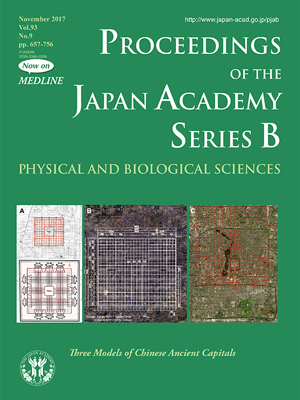About the Cover
Vol. 93 No. 9 (2017)
Dr. Shuji Funo, having started his research career with the reputed study on informal urban settlements, Kampung, in Java, Indonesia, has for nearly forty years been engaged in his quest for formation and transformation of human settlements including colonial cities of European countries. During the course of his work, his interests have been extended to cover planned cities and their planning principles. In regard to East, South and Southeast Asia, he has identified two regions in each of which a cosmological principle governing laying out of a capital city is commonly found: one is India and its peripheral regions and the other China and its peripheral regions. In this paper (pp. 724-745), Dr. Funo focuses on China, specifically on the three ancient models of the Chinese grid capitals: the “Zhōu l
- ĭ
” model (A) described in an oldest text, the Chang’ an Capital model (B) which is also the model for Heiankyo (present Kyoto) and the Dà Yuán (Dadu) Capital model (C), the model for present Beijing. Having examined previous plans reconstructed by many other scholars, he presents his own reconstruction of street plans consistent with block plans on the urban tissue level, i.e. the land division system of a “bo” (street block). As is shown in the paper, Dr. Funo never forgets the importance of actual on site measurement of relics in addition to thorough literature survey. The outcome of this attitude of his is the best exemplified in the fascinating description in Chapter 4 in which he proves that the size of a residential block is 44 bu x 440 bu and concludes that Dadu was laid out based upon the lot size, 8 mu = 44 bu x 44 bu, which was the unit of land allotment.
Professor Emeritus, Chiba University




